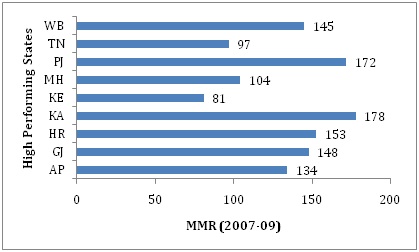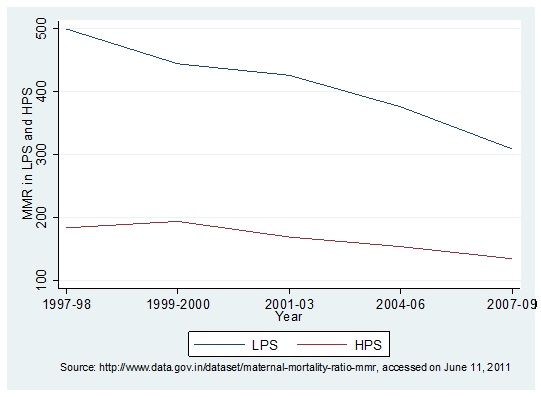This article was published in One India One People magazine, June 2013 issue, available at: http://www.oneindiaonepeople.com/
After the Right to Education and the Right to Food, a new right is being sought to be tabled in Parliament – the Right to Housing. The Draft Homestead Bill 2013 aims at providing a homestead[1] of not less than 10 cents (0.1 acres or 4,356 sq. ft) to every landless and homeless poor family in rural areas.
Given that India is home to close to 8 million homeless rural families the demand for the right to housing is not surprising. In fact, the Twelfth Plan working group on rural housing estimates the shortage in the Plan period (2012-17) at around 40 million.
However, the main question arises is – how will this “right” differ in its implementation from the existing scheme on rural housing – the Indira Awas Yojana (IAY).
Background
Launched in 1985, IAY is Government of India’s (GOI) flagship programme on rural housing. The objective of the scheme is to provide funds to for the construction of dwelling units for members of Scheduled Castes (SCs)/Scheduled Tribes (STs), free bonded labourers, and non SC/ST rural below poverty line (BPL) households.
With effect from 2013, Rs. 70,000 is provided per dwelling unit for plain areas (up from 45,000 in 2009) and Rs. 75,000 for hilly/difficult areas (up from Rs. 48,500)[2]. IAY funds can also be utilized for up gradation of a kutcha house for which a subsidy of Rs. 15,000 per unit is provided. Further, IAY beneficiaries can also avail of a top-up loan of up to Rs. 20,000.[3] In 2009, to assist those rural BPL households who have neither agricultural land nor a house-site, IAY also launched a scheme for providing homestead sites.
Over the years, allocations for IAY have increased over 2-fold from Rs. 3,885 crores in 2007-08 to Rs. 8,121 crores in 2012-13. The scheme received a significant boost in allocations in 2013-14, when GOI allocated 15,184 crores- nearly doubling the allocations for the previous year.
During the 11th Five Year Plan, against a target of 140 lakh houses, 126.98 lakh houses were constructed at a cost of Rs. 53497 crores. (See Table below for performance in the last 10 years)[4].
| Performance of IAY over the last 10 years |
in lakhs
|
| Year |
GOI Allocation |
GOI Release |
Utilization |
Target (No.of houses) |
No.of houses constructed |
| 2002-03 |
165640 |
162852.86 |
279496.46 |
13.14 |
15.49 |
| 2003-04 |
187050 |
187107.78 |
258009.69 |
14.84 |
13.61 |
| 2004-05 |
246067 |
288310.02 |
326208.64 |
15.62 |
15.21 |
| 2005-06 |
273240 |
273822.58 |
365409.05 |
14.41 |
15.52 |
| 2006-07 |
290753 |
290753.06 |
425342.45 |
15.33 |
14.98 |
| 2007-08 |
403270 |
388237.01 |
546454.3 |
21.27 |
19.92 |
| 2008-09 |
564577 |
879579.39 |
834834.33 |
21.27 |
21.34 |
| 2009-10 |
849470 |
863573.99 |
1329236.4 |
40.52 |
33.86 |
| 2010-11 |
1005370 |
1013945.4 |
1346572.75 |
29.08 |
27.15 |
| 2011-12 |
949120 |
986477.8 |
1292632.74 |
27.26 |
24.71 |
Source: Ministry of Rural Development, Annual Report 2012-13
While these numbers suggest a relatively well functioning scheme – most of GOI allocations are released, funds are utilised and houses are being constructed – there are wide state variations in performance and numerous issues with respect to implementation. Some of these are highlighted below:-
Implementation Highlights
1) Delays in Fund Flows and Construction
In 2012-13, till January (more than 3 quarters of the financial year completed), out of the total funds available[5] for IAY, only 63% of the funds were utilised. Moreover, only 46% percent of the annual target for construction was completed. These delays are particularly acute in some states. While Rajasthan and Chhattisgarh had utilised nearly 100 percent of their funds available during this period, Jammu and Kashmir had utilised only 21%, Punjab 36% and Tamil Nadu 45%. Other states such as Karnataka, Uttar Pradesh, Gujarat, West Bengal and Maharashtra had utilised only between 50-60% of funds available.[6] According to reports, part of the problem lies with delayed release of funds. In 2012-13 itself, out of the total allocation of Rs. 10513.20 crores only 54% (Rs. 5655.37 crores) was released by January 2013.
Pace of construction is also slow. Till January 2013, Tamil Nadu and Uttar Pradesh had only completed 10% and 13% of their annual target for the year, respectively. Most other states also ranged between 20-50 percent completion rates including Maharashtra (20%), Odisha (32%), Gujarat (33%), Chhattisgarh (36%) and Kerala (46%).[7]
2) Quality of houses
An important concern over the years has been with respect to the quality of houses. According to the IAY guidelines, the construction of an IAY house is the responsibility of the beneficiary. While no specific design type has been stipulated for an IAY house, sanitary latrine and smokeless chullah’s are required to be constructed along with each IAY house.
The Planning Commission’s mid-term review of the XIth Plan noted many instances of “poor quality construction, sagging foundation, use of temporary materials for roofing or leaving the construction incomplete because of inadequate finance”[8]
Four years later, similar findings were reported by the Ministry’s National Level Monitors (NLMs). During their visit to 3083 villages across 478 districts, only 15.2% of the houses were found ‘Excellent’ in terms of quality of construction, 52.2 % were rated ‘Good’, and the remaining 32.6% were ranked poor or average condition. [9]
The NLMs further found that 16% of houses which have been sanctioned for more than 2 years were still incomplete. Moreover only, 8% of the verified houses visited had smokeless chullahs and only 39% had sanitary latrines provided.
3) Beneficiary selection and allotment of houses
Selection of beneficiaries was originally the responsibility of Gram Panchayats (GP). However, due to rampant irregularities and biased selection[10], the revised guidelines stipulate that beneficiaries be identified through a Permanent IAY Waiting lists prepared on the BPL list of 2002. In order to increase transparency these lists are supposed to be displayed in all GPs.
The NLM reports however found that out of 2780 villages where permanent IAY lists were finalised, only 53% villages these were displayed on the walls. Moreover in nearly 10% of the villages the selection of beneficiaries was still not based on these lists.
While guidelines specify that 60% of IAY allocation is meant for SC/ST families and IAY houses are to be allotted (in this order of preference) in the name of the woman or jointly between the husband and the wife, audit reports by the Comptroller and Auditor General (CAG) have found many instances of houses being allotted to “fake persons” or male members.[11]
5) Land availability
Finally, the biggest constraint faced is often with respect to land availability. Land costs tend to be high and in the absence of land, houses tend to be incomplete or in a worse case not be constructed despite being sanctioned.
These findings suggest that despite nearly 30 year of the scheme in operation, there are a number of hurdles with respect to the implementation of IAY. While GOI has taken some steps in addressing these (particularly with respect to increasing the unit costs of dwelling units. providing additional assistance for construction of toilets and increasing transparency in selection of beneficiaries), there still appears to be genuine constrains with respect to delays, lack of monitoring, technical capacity, lack awareness amongst beneficiaries and even unavailability of land. Until these implementation issues are resolved the “right to housing” is unlikely to go too far.
(The author is grateful to Ms. Saamia Ibrahim for her research assistance)
[1] Homestead is defined as a dwelling with adequate housing facilities including access to basic services (drinking water, electricity, roads and public transport), appropriate location, accessibility and cultural adequacy.
[2] Ministry of Rural Development, Annual Report 2012-13.
[3] This is a part of the Differential Rate of Interest (DRI scheme) wherein beneficiaries can apply for a loan from any Nationalised bank at an interest rate of 4% per annum
[4] Ministry of Rural Development, Annual Report 2012-13.
[5] Funding for IAY is shared between GOI and states in a 75:25 ratio (for UTs it is completely centrally funded)[5]. Total funds available would include releases by GOI and States as well as opening balances at the start of the year.
[6] Indira Awas Yojana Portal, PRC Meeting 1 and 2
[7] Ibid
[8] Planning Commission, Mid Term Appraisal for Eleventh Five Year Plan. Available online at: http://planningcommission.nic.in/plans/mta/11th_mta/MTA.html
[9] Details of the criterias for different categories are available at: http://www.ruralmonitor.in/nlmreport/RM_12-13_Phase-I_All%20India.pdf
[10] The 11th Five Year Plan document had found that “25 to 50 percent of beneficiaries were not being selected to Gram Sabhas’s. Alloaction among Panchayats were influenced by PRI/MLAs.
[11] For instance, CAG found that in one district in Maharashtra, in 685 out of 2426 cases allotment of houses at a cos of Rs.4.69 crores were to male members in 2010-11. A recent report on Odisha found Rs. 1.15 crore in allotment of houses to 1144 non-BPL families in 4 districts and irregular payments to 321 “fake” BPL beneficiaries















